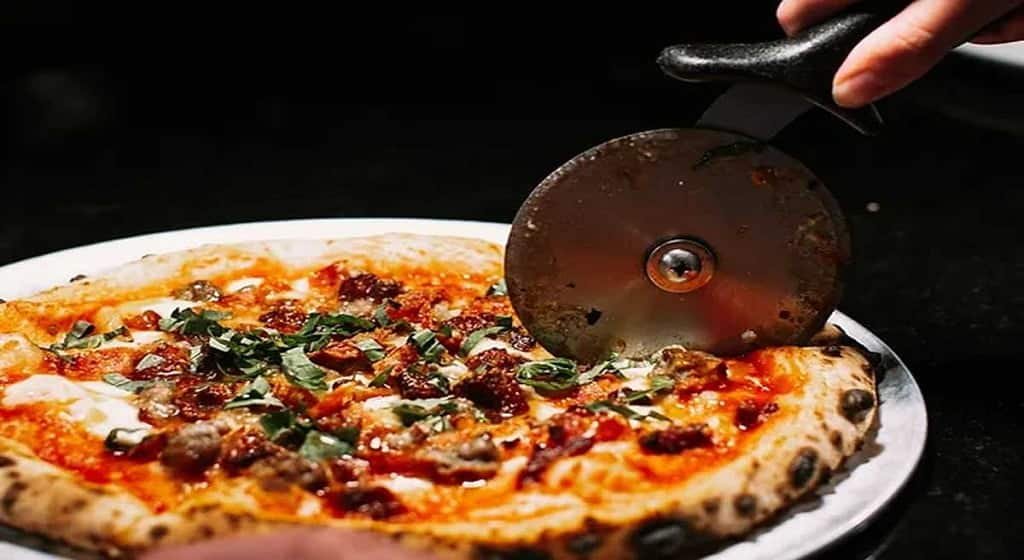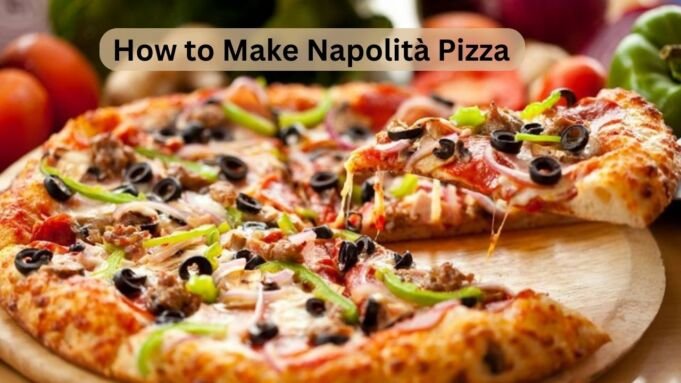Naples, a city of vibrant streets, rich history, and lively traditions, harbors a unique spirit known as “Napolità.” This term encapsulates the essence, culture, and identity of Naples, a place where history and modernity blend seamlessly.
Napolità, also known as “Napolitan” or “Napolitan Style,” originates from Naples, Italy, and represents a dynamic aspect of Neapolitan culture. Renowned for its authentic and straightforward approach, this culinary style embodies the essence of traditional Italian cooking.
However, Napolità goes beyond just pizza and pasta. In this article, we delve into the history, beginnings, and distinctiveness of Napolità cuisine, and also guide you to where you can find genuine Napolità eateries in the United States.
Historical Roots of Napolità
Founded by the Greeks in the second millennium BC, Naples has been a crossroads of civilizations. Its identity was shaped by various influences, from the Romans to the Spanish. Each era left an indelible mark on the city, contributing to the rich tapestry of Napolità.
What Is Napolità Cuisine?
Napolità enthusiasts often say the best place for genuine Neapolitan food is their mom’s kitchen. But if you’re not at home, there are several spots in Naples where you can enjoy home-style cooking.
Being a major port city, Naples has embraced a mix of ingredients and cooking styles from all over Italy and beyond. This has led to a rich cuisine that merges old influences like those from Greek and Roman times with newer ones from various Italian regions.
Historically, many local dishes were crafted by resourceful peasants who farmed the land and sea. They used basic ingredients, often overlooked by the elite, to create robust meals. Classics like spaghetti alla puttanesca (made with tomatoes, olives, capers, anchovies), eggplant parmigiana, and the savory meat ragu served in households nationwide are still popular today.
Napolità cooking is also known for using local produce, from the fresh seafood of Naples Bay to juicy San Marzano tomatoes and fiery pepperoncino peppers, each ingredient adds its unique touch to the cuisine.
Naples is also famous for its street food, showcasing its flexible and inclusive culinary culture. A notable example is Tarallo (fried bread), born from a need to use up leftover bread dough. Mixed with pepper and lard, it’s now a beloved part of Naples’ food scene.
What Is Napolità Pizza?
Napolità pizza, an emblem of Neapolitan cuisine, is much more than just a dish; it’s a culinary art form steeped in tradition. Originating from Naples, Italy, this style of pizza is distinguished by its thin, soft crust with a slightly puffed-up, charred edge known as the ‘cornicione.’ Made from simple, high-quality ingredients – typically a basic dough, San Marzano tomatoes, fresh mozzarella cheese, basil, and olive oil – Napolità pizza is cooked at extremely high temperatures in a wood-fired oven. This method imparts a unique, smoky flavor and ensures a perfectly crisp yet tender crust.
Recognized by UNESCO as an intangible cultural heritage, Napolità pizza is not just food, but a reflection of Neapolitan history, tradition, and culinary expertise.
Related: Fit Bottomed Eats Being a Foodie with a Fit Booty
Napolità in Neapolitan Lifestyle
The lifestyle in Naples is characterized by a strong sense of community and family. Streets buzz with life, as locals engage in animated conversations. Traditional events, like the feast of San Gennaro, are celebrated with fervor, showcasing the city’s deep-rooted customs.
Culinary Aspects of Napolità
Naples is synonymous with culinary excellence. The birthplace of pizza, it offers an array of traditional dishes, each with a story. Food is not just sustenance but a celebration of life, a sentiment deeply ingrained in Napolità.
Pizza
Pizza Napolità, renowned globally and originating from Naples, Italy, features a thin crust that crisps and puffs up, adorned with simple yet high-quality ingredients like mozzarella, tomatoes, and basil, and a final drizzle of olive oil. This style stands apart from other pizzas like New York or Chicago styles. Its roots trace back to Naples’ poor neighborhoods in the 1700s, where locals first added tomatoes and cheese to flatbread.
Making authentic Napolità pizza is an art: the dough, typically made from type 0 or 00 flour, is hand-kneaded and carefully formed into a thin 11″ disc. It’s then topped with fresh ingredients like San Marzano tomatoes and Campania-sourced mozzarella, emphasizing each flavor in a harmonious blend. This meticulous preparation process makes Napolità pizza a must-try experience in Naples.
Pasta
Napolità cuisine, a delight for pizza and pasta lovers, delivers robust and memorable flavors reminiscent of Naples. Explore the simplicity and tastiness of Napoli sauce (also known as salsa di pomodoro alla napoletana, Napoletana sauce, or marinara) which can elevate classic spaghetti or add zest to inventive pasta dishes like spinach-ricotta cannelloni, filled ravioli, or tortellini, making for an enticing culinary experience.
This adaptable sauce is a perfect match for any vegetables you have, whether it’s shredded carrots, mushroom slices, fresh spinach, or even zoodles! Don’t forget to keep some pasta water; its starchiness helps to create a smooth emulsion, enhancing the sauce with a rich umami flavor.
Read More: Lookytasty Adventures in Food New York City Chicago
How to Make Napolità Pizza at Home?
Making Napolità pizza at home is a rewarding experience that brings a taste of Naples into your kitchen. Here’s a step-by-step guide to creating this classic dish:
Ingredients
For the Dough:
- 500g (about 4 cups) ’00’ flour (high-protein, finely ground Italian flour)
- 325ml (about 1⅓ cups) warm water
- 2g (½ teaspoon) dry yeast
- 10g (2 teaspoons) salt
For the Topping:
- San Marzano tomatoes, crushed
- Fresh mozzarella cheese, sliced
- Fresh basil leaves
- Extra virgin olive oil
- Salt to taste
Equipment
- Pizza stone or baking sheet
- Pizza peel (if available)
Preparation
Make the Dough:
- Dissolve the yeast in warm water and let it sit for a few minutes.
- Mix the flour and salt in a large bowl.
- Gradually add the yeast mixture to the flour, mixing until a dough forms.
- Knead the dough on a floured surface for about 10-15 minutes until it’s smooth and elastic.
- Place the dough in a bowl, cover it with a damp cloth, and let it rise for 2-4 hours, or until it doubles in size.
Shape the Pizza:
- Divide the dough into 4 equal parts for individual pizzas.
- On a floured surface, gently flatten one piece into a disc, then stretch it out to about 11 inches in diameter. Try to keep the edges thicker to form the crust.
Preheat the Oven:
- Place a pizza stone in the oven and preheat to the highest setting (ideally 500°F or 260°C) for at least 30 minutes.
Add the Toppings:
- Spread crushed San Marzano tomatoes over the base.
- Add slices of fresh mozzarella, but don’t overload the pizza.
- Drizzle with a little olive oil and add a pinch of salt.
Bake the Pizza:
Carefully transfer the pizza onto the preheated stone using a pizza peel.
Bake for about 5-7 minutes, or until the crust is puffed and golden and the cheese is bubbling.
Final Touch:
- Once out of the oven, add fresh basil leaves.
- Let the pizza cool for a minute, then slice and serve.
Enjoy your homemade Napolità pizza with its classic thin crust, vibrant flavors, and the satisfaction of creating an authentic Italian masterpiece right in your own kitchen! Remember, the key to a great Napolità pizza is simplicity in toppings and a hot oven for that perfect crust.
Read Also: Gettin My Healthy on a Food and Lifestyle Blog
5 Most Popular Napolità Pizza

Napolità pizza, with its rich tradition and simple yet exquisite flavors, offers a variety of popular styles. Here are five of the most beloved and classic Napolità pizzas:
- Margherita: The quintessential Napolità pizza, Margherita is a symbol of Italian cuisine. It’s topped with San Marzano tomatoes, fresh mozzarella cheese, fresh basil, salt, and extra-virgin olive oil. The colors represent the Italian flag: red tomatoes, white mozzarella, and green basil.
- Marinara: This is one of the simplest yet most flavorful Napolità pizzas. It doesn’t contain cheese, which allows the flavors of the tomato sauce, garlic, oregano, and extra-virgin olive oil to shine through. It’s named “Marinara” because it was traditionally prepared by the wives of Neapolitan fishermen upon their return from the sea.
- Capricciosa: A more elaborate option, the Capricciosa features a combination of tomatoes, mozzarella, ham, artichokes, mushrooms, olives, and sometimes even a split or whole egg. It offers a delightful mix of flavors and textures.
- Quattro Formaggi (Four Cheese): For cheese lovers, the Quattro Formaggi is a dream. It typically includes a blend of four different types of cheese, such as mozzarella, gorgonzola, parmigiano-reggiano, and fontina or ricotta, offering a rich and creamy flavor profile.
- Diavola: This spicy pizza is perfect for those who enjoy a bit of heat. It’s topped with tomatoes, mozzarella, and spicy salami or pepperoni. The name “Diavola” translates to “devil” in Italian, referencing its hot and fiery nature.
Each of these pizzas is rooted in the tradition of Napolità pizza-making, with a focus on high-quality, fresh ingredients, and a thin, flavorful crust cooked in a wood-fired oven. They are beloved not only in Naples but around the world, exemplifying the simplicity and elegance of Italian cooking.
What Makes Napolità Cuisine Unique?
Napolità cuisine stands out for its traditional cooking techniques, fresh local ingredients, and deep-rooted historical influences. It strictly follows the Vera Pizza Napoletana standards, requiring just water, salt, yeast, and flour for pizza dough, and mandates baking in a wood-fired oven at high temperatures for a brief period. Pasta in Napolità cooking is typically served ‘al dente’, paired with simple, flavorful sauces made from tomatoes, garlic, basil, olive oil, and cheese.
The cuisine emphasizes the quality and freshness of ingredients from Campania’s rich lands and seas, like San Marzano tomatoes, buffalo mozzarella, anchovies, lemons, and extra virgin olive oil. Reflecting Naples’ history and cultural pride, Napolità cuisine is central to festive events like Christmas, Easter, and Carnival, featuring special dishes that celebrate these occasions and family gatherings.
Where to Find the Best Napolità Pizza in the US?
Finding the best Napolità pizza in the United States can be quite an adventure, as many pizzerias across the country strive to replicate the authentic Neapolitan experience. Here are some notable places known for their exceptional Napolità pizzas:
- Pizzeria Bianco – Phoenix, AZ: Chris Bianco’s Pizzeria Bianco has gained national acclaim for its authentic Napolità pizzas. The attention to detail and quality ingredients make this place a must-visit for pizza aficionados.
- Roberta’s – Brooklyn, NY: Located in Brooklyn, Roberta’s combines a hip atmosphere with pizzas that pay homage to the traditional Napolità style, albeit with a unique, modern twist.
- Una Pizza Napoletana – San Francisco, CA: Anthony Mangieri’s Una Pizza Napoletana is renowned for its dedication to the art of Napolità pizza-making, using high-quality ingredients and traditional methods.
- Motorino – New York, NY: Motorino, with locations in Manhattan, offers a variety of Napolità-style pizzas with perfectly charred crusts and gourmet toppings.
- Antico Pizza Napoletana – Atlanta, GA: For a taste of Naples in the South, Antico Pizza Napoletana in Atlanta is a top choice. Their authentic approach and wood-fired pizzas have garnered a loyal following.
- Settebello Pizzeria Napoletana – Multiple Locations: With locations in Nevada, California, and Utah, Settebello is committed to the craft of Napolità pizza, adhering closely to traditional techniques and ingredients.
- Osteria Mozza – Los Angeles, CA: A collaboration between Nancy Silverton, Mario Batali, and Joe Bastianich, Osteria Mozza offers a high-end dining experience with a selection of exquisite Napolità-style pizzas.
These establishments are celebrated for their commitment to the craft of Napolità pizza-making, each offering their unique take on this classic Italian dish. While the true Napolità experience is best had in Naples, these pizzerias in the U.S. offer a taste that comes impressively close.
To Know More: Top 40 AirFood Recipes for 2024
Napolità in Contemporary Naples
Today, Napolità is a bridge between the past and the present. While facing modern challenges, Naples remains a city where tradition and innovation coexist, and its culture continues to captivate people worldwide.
Conclusion
Napolità is more than a concept; it’s the living soul of Naples. It’s in the city’s streets, its music, its food, and its people. Understanding Napolità is essential to appreciating the depth and richness of Neapolitan culture.
Frequently Asked Questions (FAQs) about Napolità Pizza
What is Napolità Pizza?
Napolità Pizza is a traditional style of pizza originating from Naples, Italy, known for its thin, soft crust with a puffy edge, simple toppings, and quick cooking in a wood-fired oven.
What makes Napolità Pizza different from other types of pizza?
Napolità Pizza is unique due to its specific preparation method, high-quality ingredients like San Marzano tomatoes and mozzarella di bufala, and its characteristic thin, soft crust with a charred, puffy edge.
What are the key ingredients in a Napolità Pizza?
The essential ingredients are ’00’ flour, fresh yeast, water, and salt for the dough, and San Marzano tomatoes, fresh mozzarella cheese, basil, and extra-virgin olive oil for the topping.
How is Napolità Pizza cooked?
It is traditionally cooked in a wood-fired oven at a very high temperature (around 800°F or 430°C) for a short time, typically 60-90 seconds.
What are some classic varieties of Napolità Pizza?
The most classic varieties include Margherita (tomatoes, mozzarella, basil, olive oil) and Marinara (tomatoes, garlic, oregano, olive oil).
Can Napolità Pizza be made at home?
Yes, it can be made at home, though replicating the exact style may be challenging without a wood-fired oven. A very hot conventional oven and a pizza stone can be used as alternatives.
Is Napolità Pizza recognized internationally?
Yes, the art of Neapolitan ‘Pizzaiuolo’ is recognized by UNESCO as part of the Intangible Cultural Heritage of Humanity, highlighting its global cultural significance.















